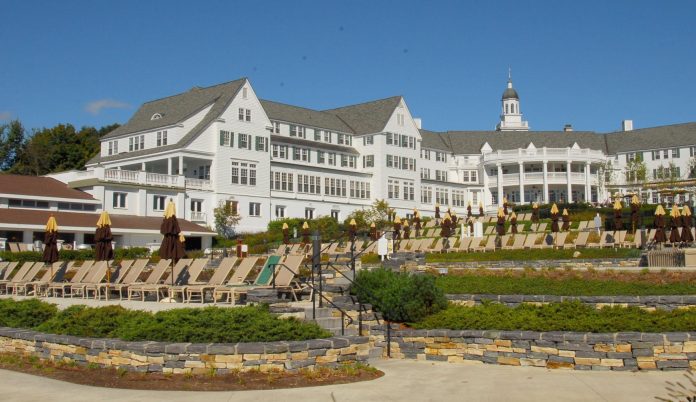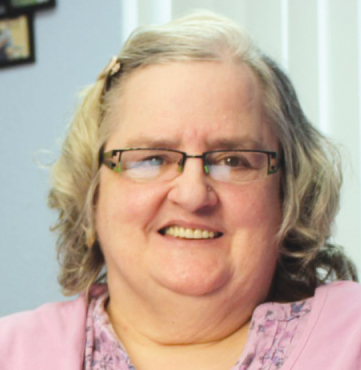The Oklahoma Medical Marijuana Authority (OMMA), with assistance from the Office of Management and Enterprise Services (OMES), has selected Complia as the provider for compliance and licensing management software.
Using a statewide contract, the Denver-based company was selected through a review process that determined it was best equipped to meet OMMA’s specifications and time requirements. The passage of SQ788 tasks the Oklahoma State Department of Health (OSDH) with having an application process in place by August 25 for patients, caregivers and businesses to apply for licenses and for the agency to collect application fees. OSDH created the OMMA to regulate the medical marijuana program.
Complia is a group of compliance officers and technologists with a background in cannabis licensing systems and government software.
“With this agreement in place, we are continuing our commitment to having the structure in place to meet all of the requirements of SQ788,” said OSDH Interim Commissioner Tom Bates. “We are deeply appreciative to OMES for providing their expertise in evaluating the vendor products and for helping select the right fit to implement the online application system. They were able to accelerate the process in order for us to meet the challenging deadlines we face.”
Software Vendor Selected for Oklahoma Medical Marijuana Authority Licensing Management
Made in Oklahoma: Okie Dough provides unique treat
Edible cookie dough may be the next best dessert to hit the shelves.
Thanks to Dhea and Karla Hudson, owners of Okie Dough, this tasty treat is now available across Oklahoma.
The cookie dough is made without eggs or added milk and made with heat-treated flour, so it is completely safe to eat. Available in about 15 flavors, Okie Dough can be eaten straight from the freezer or refrigerator because it lasts up to 12 weeks in the freezer and up to eight weeks in the refrigerator.
The most challenging part of being in the business is making it clear to customers that the product is safe to eat, Dhea Hudson said.
“The nostalgia of eating cookie dough is unlike that of any other dessert,” Dhea Hudson said. “I hear all the time that there is an emotional connection that can’t be manufactured. It’s inherent in the product and unique to cookie dough.”
The idea behind Okie Dough started in school when Dhea was a high school counselor.
“I often would bring baked goods to my students,” she said. “When they asked for my cookie dough instead of the cookies, I was hesitant because of the raw eggs, and I didn’t want to make anyone sick. So I began experimenting with my original chocolate chip cookie dough recipe without eggs. I would bring a batch to school, and the kids would disapprove or approve. And finally on the fifth time, everyone really liked it. I had done my research on the heat-treating of the flour by then, so sharing at school was completely safe. And that is how Okie Dough was created.”
The business began in April 2017. In the first year, Okie Dough made it to 10 festivals, all home Oklahoma University football games, the Cox Convention Center, the Chesapeake Arena for all Thunder games and events, the Texas Motor Speedway, and many more.
Okie Dough also joined the Made in Oklahoma Program this year. The product is made using flour from Shawnee Mills in Shawnee, Okla., butter from the Hiland Dairy in Chandler, Okla., and Griffins Vanilla from Muskogee, Okla. For more information, visit madeinoklahoma.net/products/okie-dough, okiedoughlicious.com, or find Okie Dough on Facebook.
AUG/SEPT AARP Drivers Safety Classes
Date/ Day/ Location/ Time/ Registration #/ Instructor
Aug 2/ Thursday/ Okla. City/ 9 am – 3:30 pm/ 951-2277/ Varacchi
Integris 3rd Age Life Center – 5100 N. Brookline, Suite 100
Aug 2/ Thursday/ Norman/ 9 am – 3:30 pm/ 307-3177/ Palinsky
Norman Regional Hospital – 901 N. Porter Ave
Aug 10/ Friday/ Okla. City/ 9 am – 3:30 pm/ 951-2277/ Edwards
S.W. Medical Center – 4200 S. Douglas, Suite B-10
Aug 10/ Friday/ Okla. City/ 8:30 am – 3;30 pm/ 773-6910/ Kruck
Baptist Village – 9700 Mashburn Blvd.
Aug 15/ Wednesday/ Warr Acres/ 8:30 am – 3 pm/ 789-9892/ Kruck
Warr Acres Community Center – 4301 N. Ann Arbor Ave.
Aug 23/ Thursday/ Okla. City/ 9 am – 3 pm/ 752-1200/ Varacchi
14901 N. Penn. Ave..
Sep 6/ Thursday/ Okla. City/ 9 am – 3:30 pm/ 951-2277/ Varacchi
Integris 3rd Age Life Center – 5100 N. Brookline, Suite 100
Sep 8/ Saturday/ Moore/ 9 am – 3:30 pm/ 799-3130/ Schaumburg
Brand Senior Center – 501 E. Main St.
The prices for the classes are: $15 for AARP members and $20 for Non-AARP. Call John Palinsky, zone coordinator for the Oklahoma City area at 405-691-4091 or send mail to: johnpalinsky@sbcglobal.net
OKC Lion’s Club gifts $6,000 to the Metro Tech

The Oklahoma City Lion’s Club gifted $6,000 to the Metro Tech Foundation, funds that will be utilized to cover costs outside tuition such as uniforms, tools, certification fees and equipment.
OKC Lion’s Club Board Member Tom Springer said historically the club has supported college scholarships for area high school students and had a desire to help adult students pursuing technical education as well.
“Many of the Lion Club members attended vocational school at some point in our lives and wanted to support students who graduate with a trade and might need a little help getting started in their career. Welding tools, nursing accessories, certification test fees – we don’t want any student to miss an opportunity due to lack of funds at the beginning of their career,” Mr. Springer said.
Metro Tech Foundation Executive Director Ashleigh Gibson expressed gratitude for a gift that will allow the Foundation to remove financial barriers from student success.
“These financial gifts often make the difference between giving up and succeeding for students who are working hard to achieve their dreams,” Ms. Gibson said.
Metro Tech is an Oklahoma technology school that offers free tuition to Oklahoma City Public Schools, Crooked Oak Public Schools and Millwood Public Schools students. Full-time and part-time training is offered for adult students, as well as customized Business & Industry training.
Right place, right time – Nurse, MA save coworker
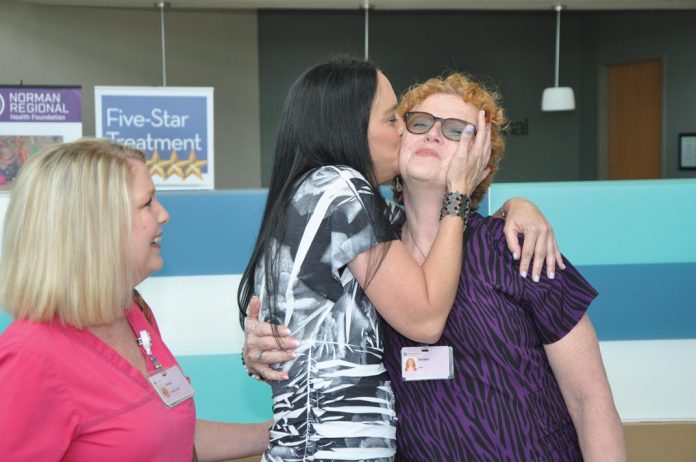
by Bobby Anderson,
Staff Writer
It was like any other day at work for Lisa Marti on May 9, except it would be one that would change her life.
Marti, 39, a medical assistant at Norman Regional’s Endocrinology Associates, was found slumped over in her chair at the nurse’s station by two coworkers.
After finding her unconscious, Kayla Masters, medical assistant, and Sherry Potter, LPN, transported Marti to a treatment room. They quickly realized Marti had no pulse and wasn’t breathing.
Marti had gone into cardiac arrest, with no previously known heart conditions. They immediately began CPR and called 911. Before first responders arrived, other members of the endocrinology team, including Dr. Lubna Mirza, Michelle Jackson, Estelle Cappony and Alicia Glenn stepped in to help any way they could, and brought in cardiologist Dr. Michael Villano and his staff from the clinic next door.
“It was a nightmare—I don’t even know how to describe it,” Masters said. “It was pretty devastating to see her like that. A lot of us didn’t know if she was going to make it. It was the worst thing I’ve ever dealt with in a work setting, but I think we handled it very professionally. We acted promptly and did the best we could.”
Potter, who previously worked on a cardiology floor in a hospital, said trying to revive someone she knew was different from anything she has ever experienced with a patient.
“It was more intense. It’s always in the back of my mind—wondering if (Marti) is okay and thinking about all the ‘what ifs,’” Potter said. “Things happen for a reason. (Marti) asked to go home earlier that day because she didn’t feel well, but we didn’t send her home—I guess that was so we could save her life.”
Judy and Henry Lantz, Marti’s parents, were two of multiple family members to receive a call from the endocrinology staff. They immediately rushed to the hospital, as did Marti’s daughter Kaitlynn and her son Tyler.
“It was the most terrifying day of our lives,” Lantz said.
When Marti’s parents arrived to the Emergency Department, Marti was continuing to slip in and out of consciousness. She was shortly moved to the Cardiovascular Intensive Care Unit (CVICU).
“There were some good moments and a lot of bad ones,” Judy said. “It would seem like she was getting better then she would code again. It’s not easy to be holding your daughter’s head when she dies, especially over and over again.”
Marti coded about 10 times in total before cardiologist Dr. Muhammad Salim put in a permanent pacemaker for Marti, which stabilized her and her heart function.
Although Marti doesn’t remember much of what happened, she said it’s “very scary” to hear about it all, but she received a ton of support from family, friends, coworkers, and her care team that helped get her by.
“I didn’t have anybody who disappointed me in my care here. They offered all of the support and answers I needed,” she said.
Marti has two children and two grandchildren to live for. She was able to return to work on Monday, June 18.
“I’m just happy to be alive and to have this second chance at life,” she said.
Nephrologist Dr. David Williams is working with Marti on her follow-up care to determine the cause of her event. She said she is very grateful for his kindness and care.
“Hopefully we’ll have answers soon,” Marti said.
Sharing Love for Sixty-Three Years
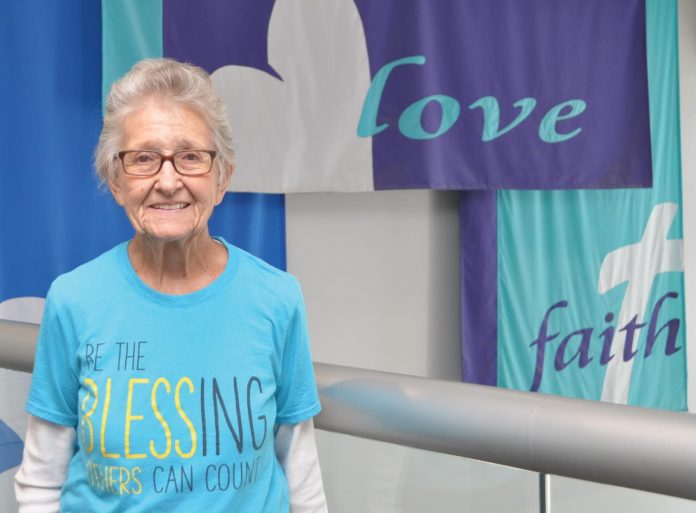
by Vickie Jenkins
Staff Writer
It takes a special person to be a nurse. It also takes a special person to be a nurse for 63 years. One special person is Vera Doughty, RN. Her whole life has been dedicated to doing what she does best, loving and caring for others. For the last 28 years, Vera has spent her time at the Children’s Center Rehabilitation Hospital sharing her motherly love as she cares for the children.
Growing up in Crescent, Oklahoma, Vera moved to Oklahoma City to start Nursing School in 1952. “When I was a little girl, I didn’t always want to be a nurse; I wanted to be a Veterinarian. That was in the early 40’s and 50’s and I knew if that was the case, I would have to deliver cows and horses, and with my little, petite size body, I knew I wasn’t big enough to handle that, so I became a nurse,” she replied with a laugh. Can you image me trying to deliver a cow?” she asked.
“Yes, I have always loved animals. I remember when I was a little girl; I took care of a lot of animals; Cats, dogs, and chickens. When all of the other little girls were playing with their dolls, I was out playing with the animals. I guess you could say I was playing nurse and nursing them back to health,” she replied.
Vera went to Nursing School through Saint Anthony’s Hospital. “My first job as a nurse was at Saint Anthony’s Hospital and then I worked for 2 family practitioners. They were partners in the doctor’s office. Both of them were so good and they taught me a lot of what I know today. One of the doctors ended up passing away and the other doctor retired, so all of a sudden, I didn’t have a job. I found a job that I really liked and that was 28 years ago. They were such good doctors and I was the only nurse they had. After one doctor passed away and the other one retired, I had to find a job,” Vera said with a laugh. “I came here to the Children’s Center and I never left, so I must like it here,” she added.
In Vera’s opinion, it takes several qualities to make a good nurse. “A nurse has to be observant of what’s going on and they have to be interested in the patient. They have to be caring and have a real desire to take care of others,” she said.
It takes a mixture of love and determination, always following through and never giving up, being kind and considerate to others, always setting a goal and reaching for it, this is a mixture of Vera’s strongest assets.
Working in the yard and playing with her great-grandkids is what Vera does in her spare time. “I stay busy and enjoy every minute of it,” Vera said.
I asked Vera where she would travel to if she could travel anywhere in the world and she replied with a quick answer, “Oh, I would go to Switzerland. “My grandparents lived in Switzerland and I always thought it would be nice to go see where they lived. Plus, I have always been fond of the movie, Heidi. The green grass, the rolling hills… I always thought it would be a great place to visit. A beautiful place to go if I were to travel, but I don’t think I will be going there anytime soon,” she said with a smile.
“If I were to give advice to someone going into the medical field, I would tell them have a real desire for it, don’t do it for the money or the prestige, do it for the love that comes from within your heart,” she said. “They would need to have a real desire to take care of other, never expecting anything in return. Whatever they did, they shouldn’t do it for the money, not for the prestige, they need to do it from their love for others,” Vera said.
Words to live by: “Oh that’s an easy one. The Bible,” she replied.
Need for speed: Moore gives it all
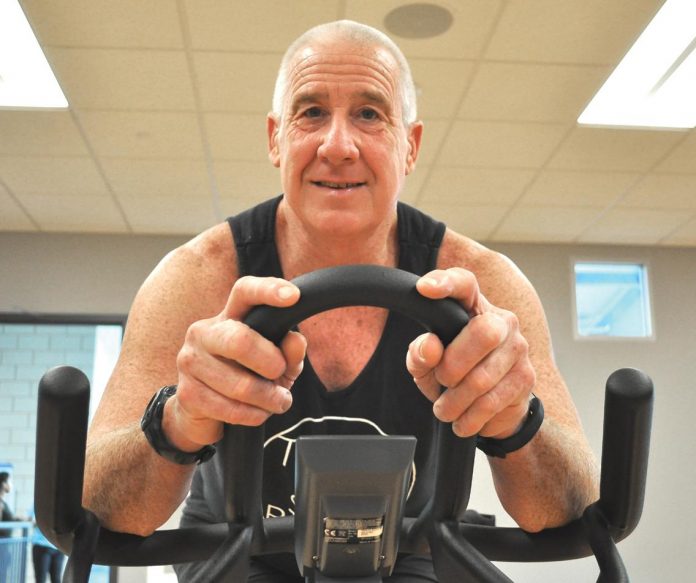
by Bobby Anderson, Staff Writer
Get fit, get fitter or get fittest.
That’s 61-year-old Jay Moore’s motto.
Moore teaches six spinning classes a week – an hour of pure, heart-pumping stationary cycling at a time at The Station at Central Park in Moore.
When he’s not on the bike he’s teaching a master’s swim class at six in the morning.
When he’s not doing that he’s competing in Oklahoma, around the country or even around the world as a member of Team USA.
Moore starting doing triathlons back in 1989 and continued through 1994 when a knee injury sidelined him.
Seventeen years went by and his waistline surpassed his belt.
At the end of 2010 he weighed 250 and had had enough.
“I bought an elliptical because I was too fat to run,” he laughed. “I got down to about 210 and stayed there. I changed my eating and got down to 195. I got the bike down out of the attic and started riding and running a bit.”
He trained for a year and won his first race.
He’s been on Team USA for five years in a row.
“They’ll ask me ‘what’s your secret,’” Moore said.
His secret is getting wet.
Weekly, he swims three or four miles spread out four or five days. He’s found that his arthritic shoulders respond well.
“The less I swim the worse I feel,” he smiles.
Moore’s spin class is one of the more popular offerings at The Station at Central Park in Moore. Entry tickets to his class at the front desk are often scooped up before a single pedal is even turned.
“I get them fired up. We crank that music up,” Moore grins. “When people see a song they really like they’re over there pedaling their butt off and singing along.”
People come to sweat, but they also come to get some of Moore’s energy.
“I feel like this is Godsend. I’m here to help other people,” he said. “This is my way of giving. And I enjoy it.”
At 61, ego and competition still fuel him.
“I’ve been weight training for five months because when we get older you need to lift weights,” Moore said. “I’m a swim, bike, run guy. I’m a cardio freak. I feel stronger and better.”
He went to the world championships last year against his doctor’s advice.
“When I hurt my knee I went to aqua bike riding,” Moore said. “I ran 10 minute miles because people were lined up and down the street. I wasn’t going to walk.”
A couple months later he went to nationals and finished sixth on a bad knee.
He usually runs seven-minute, thirty-second miles on a 5K trail but his knee slowed him to a 9:15 pace.
It was his swim times that put him so far out in front.
When Moore competes he’s typically facing 500-meter swims combined with a 12.5-mile bike ride and then a 5K run.
Olympic distance races carry one-mile swims, a 25-mile bike ride and a 10k run.
“It’s weird. It’s not the guys in my age group but it’s the ones 35 to 50 they want to beat me so bad,” Moore said. “If someone beats me I just kind of smile. The salesman in me makes me look like it doesn’t bother me.”
When he’s not training he’s running a business.
Moore started in the flooring business at 16. He traveled for 15 years as a suit-and-tie rep.
“My dad bought me a truck at 16 and said you need to go learn how to lay carpet,” he said. “In college I could work on Friday afternoons and Saturdays after the other guys had already gotten their check and were at the bar and wouldn’t show up.
“I could make $100 or $200 a week in the late 1970s.”
In 1982 he hit the road with a $40,000 salary and all expenses paid.
Along the way he picked up a certification to be a moisture tester.
Since 2009 he’s owned Floors by Moore. He operates on a wholesale mentality.
“I’ve got a warehouse full of samples and carpet and I do just as much,” Moore said. “People say ‘call this guy’ because I’m usually cheaper and my guys do real good work. That’s a good combination.”
He thrives on the hunt. On land or in the water, he wants to be first.
“I put it all out there. I’ve puked at the finish line quite a few times. I’m just so competitive,” Moore said.
TRAVEL/ ENTERTAINMENT: Lake George, New York: An Upstate Discovery
Photography and Text by Terry “Travels with Terry” Zinn t4z@aol.com

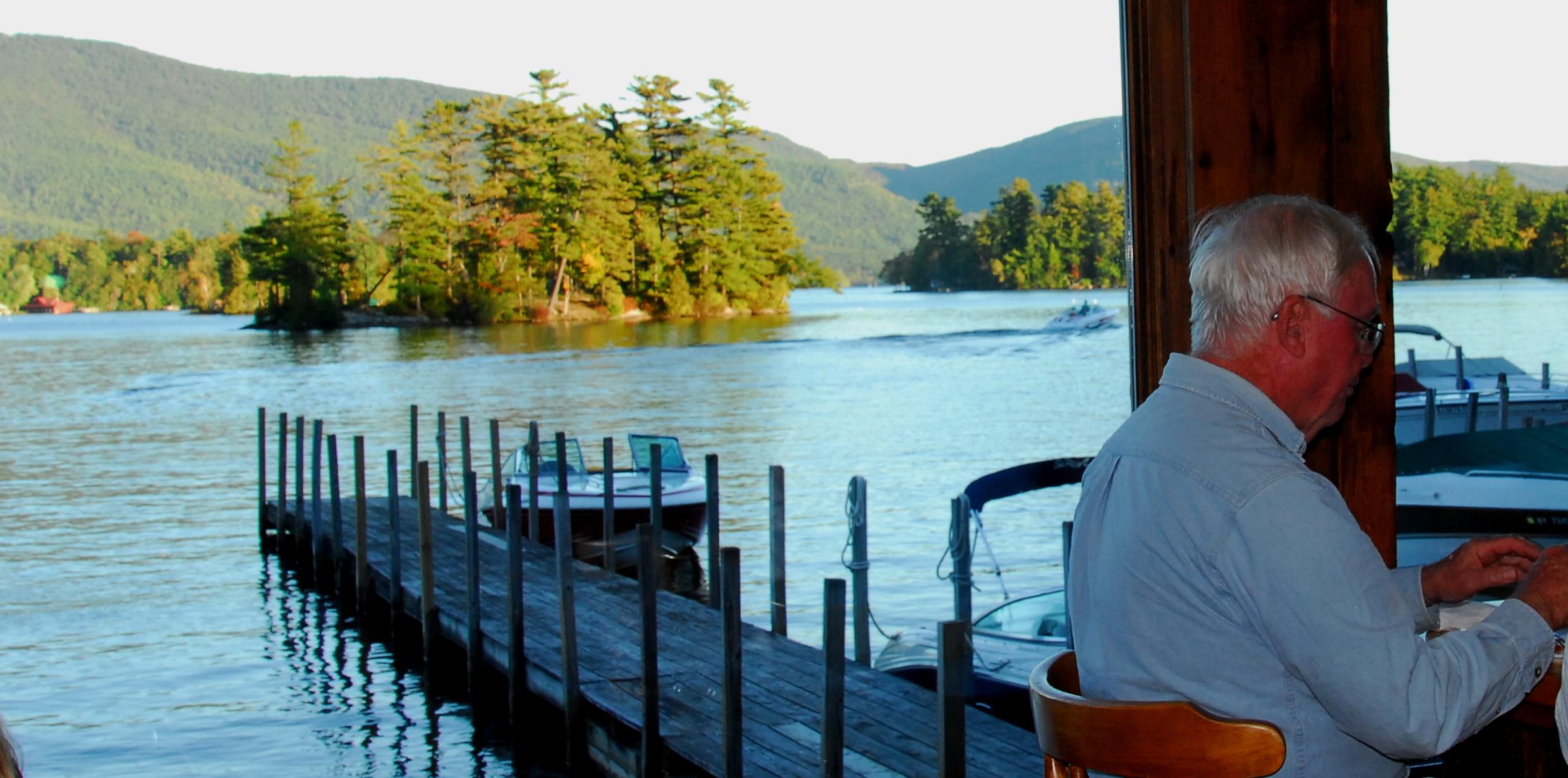
When I visited Albany, New York, I just had to explore a little farther north to the Lake George area. There I found the small town “Festival of the Lake,” in progress next to the southern end of the expansive lake itself.
My home base was the Fort William Henry Hotel with an upper story lake view. It’s so nice to wake up and go to bed with the ever-changing view of water and distant mountains. The hotel offers several styles of accommodations, but staying in the main historic building was optimal, and the prime location for viewing the weekend fireworks over the lake from the room.
I had an unpleasant lunch at the little snack bar café on the waterfront where the manager was almost rude and not accommodating to this paying customer. But with that unpleasantness aside, the rest of my tourist visit to Lake George was very pleasant.
Up the lake side road is the legendary and historic Sagamore Hotel, where you must stop in for a tour or definitely a lunch. The Sagamore opened its doors in 1883 with luxurious Lake George accommodations that attracted a select, international clientele, and quickly became the social epicenter for the wealthy residents of Green Island and Millionaires’ Row. Twice damaged by fire in 1893 and 1914, The Sagamore was fully reconstructed in 1930 through the efforts of Dr. William G. Beckers of New York City, one of the hotel’s early stockholders, and William H. Bixby, a St. Louis industrialist. Together they financed the cost despite the period’s bleak economic climate and The Sagamore continued to thrive, hosting the National Governor’s Conference in 1954, which was presided over by Vice President Richard M. Nixon and Governor Thomas E. Dewey.
A staff member of the Sagamore, suggested I travel, if time allowed to go a bit farther north, to the northern most part of Lake George and visit the Fort Ticonderoga area. I had always heard about this revolutionary war locale and it was enlightening to tour the reconstructed fort and see its importance for guarding the waterfront. Approaching the Park area I came across a fox hunt, complete with riders and hounds in progress, temporarily halting car traffic. It was as if I was transported back in time.
Another dining treat was the Algonquin Restaurant at Bolton Landing, near the Sagamore Hotel, where locals take their boats, docked them by the water front restaurant, enjoy a meal or cocktail, and then retreat to their lake homes via the water, before the sun completely sets. Boating to them is as casual as taking the family car out to dinner ~ so quaint and a hint at the local lake culture.
I enjoyed dining at the very popular Lake George’s Marios Italian Restaurant, and at the Lake George Dinner Theater, where the play was well done and my congenial extemporaneous senior citizen ladies table mates, was more entertainment. The Lake George man street plays host to a number of assorted shops and eateries, including the wine tastings at the Adirondack Winery.
They say you must get on the lake to experience Lake George and the Lake George Steamboat Company fills that order. With several specialty cruises or a casual noon time cruise, you get a different perspective of the Lake and the mountains. Establish in 1817, the Company has been operating on Lake George for over200 years. They offer a number of boats including the Minne Ha Ha, The MV Mohican or the flagship, Lac du Saint Sacrement.817, the Lake George Steamboat Company has been operating on Lake George for over 200
While I was at Lake George in late September, I found I was at the end of their season, so you may want to arrive earlier in the year, go now, or plan now for your spring/summer upstate New York getaway. America and upstate New York has so much to explore and enjoy.
Before you go check out:
www.fortwilliamhenry.com
www.adirondackwinery.com
www.thesagamore.com
www.lakegeorgedinnertheatre.com
www.lakegeorgesteamboat.com
www.thealgonquin.com
DARLENE FRANKLIN: READY, AIM . . . MUSIC?
By Darlene Franklin
I’ve never been to war. Aside from a few skirmishes, neither had anyone in Israel’s army. After being freed from Egypt and spending forty years wandering, the desert-hardened Israelite army prepared to fight for the land promised to them by God. How did they feel? Nervous, anxious for their first battle, wanting to get it over with, so they could get on with their new lives? I’ve never been to war. Aside from a few skirmishes, neither had anyone in Israel’s army. After being freed from Egypt and spending forty years wandering, the desert-hardened Israelite army prepared to fight for the land promised to them by God. How did they feel? Nervous, anxious for their first battle, wanting to get it over with, so they could get on with their new lives? They set up camp, all 600,000 of them, spreading out from Jericho’s front gates. Expecting war, imagine how they felt when all they did was to march around the walls one time every day each day for a week with trumpets sounding. You may know the story. At the end of the week, they marched seven times, the instruments blared, the men shouted—and the walls fell down. The battle ended before they threw a spear (Joshua 6).Centuries later, the judge Gideon led a small group of three hundred men to fight the Midianites, Amalekites, and others who’d oppressed the Jewish people. Again, God used the weapon of music—a blaring trumpet—to defeat the opposition (Judges 7).During Jesus’ final week on earth, the crowds sang hosanna when He rode into Jerusalem on the back of a donkey. A few days later, the disciples “sang a hymn and departed” after the Last Supper, beginning the countdown to Jesus’ death. Is it any wonder that Isaiah links strength and music?Behold, God is my salvation; I will trust, and not be afraid; for the Lord JEHOVAH is my strength and my song; He also is become my salvation. (Isaiah 12:2 KJV)His words echo Moses’ song after crossing the Red Sea (Exodus 15:2,), as well as the psalmist’s words in Psalm 118:14. Music composed at the height of war has become national anthems (the United States’ Star Spangled Banner and France’s La Marseillaise). In the mid-twentieth century, songs like “We Shall Overcome” played a vital role in the civil rights movement. It’s easier to imagine the connection between music and patriotism than between music and war. There are narratives (probably not factual) of children marching to the Crusades while singing “Fairest Lord Jesus.” Many translations of Isaiah 12:2 plainly place music in war’s arsenal (the Lord is my strength and my song, see the KJV and many others.) Some changed the English word from “music” to “defense” instead. None of the commentaries or lexicons I consulted gave me a clue as two such different words have been used. Neither commentaries and Hebrew word meanings helped me understand how the same word means two such different things, or why the translators changed their work. Was it possible that music was defense?It is for me. When I’m tired, discouraged, unable to sleep, I hum “Abide with me.” If rejoicing in God’s good gifts? How about “Joy to the world, the Lord is come?”When I checked a website for hymns based on Isaiah 12:2, I found over over thirty songs. Here are a few of my favorite phrases: “Jesus! ’’Tis music in the sinner’s ears, ‘Tis life, and health, and peace”—Isaac Watts“I am trusting Thee for power, Thine can never fail”—Frances Ridley HarvergalAnyone who’s ever been moved by a song on the radio or at a concert can testify to the power of music. It slips into the heart, curls up next to the spirit and warms it even before we take in the words. Who doesn’t want to stand and shout when they hear “I’m Proud to be an American” on the 4th of July? Not to mention Katherine Lee Bates’ immortal words about “America the Beautiful.” Music has the capacity to bypass logic and doubt and stir our worship to God. If we wonder what to sing about, we can look at everything we learn about God in Isaiah 12:2. Our Creator’s creation calls for songs of praise. Yahweh, the great I AM, is the beginning of everything and the source of songs of praise. He was Salvation for those before Jesus took on human form, born of the virgin Mary. The love demonstrated at the cross “demands my soul, my life, my all.” (Isaac Watts) God my salvation and strength is also my defense. Let His praise be continually on my lips.
Darlene Franklin is both a resident of a nursing home in Moore, and a full-time writer.
History makers: Seniors encouraged to share
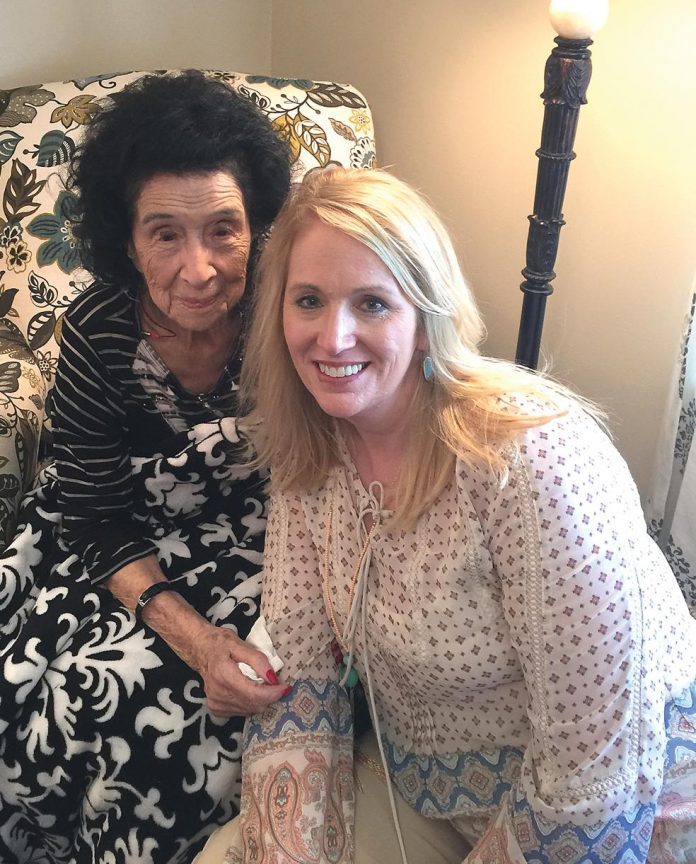
by Bobby Anderson
Staff Writer
What started with an email from a 15-year-old high school sophomore in New Jersey has turned into Oklahoma seniors recording their history for future generations.
Melissa Holland serves as the executive director of the Oklahoma Assisted Living Association. An email from Michael Naya, Jr., showed up in Holland’s inbox a few months ago.
“He was interested in history and was having problems finding people who were Dust Bowl survivors,” Holland said of Naya’s project. “He asked if I could reach out to our membership.”
Holland mentioned each spring OKALA recognizes those over 100-years-old. A friend at the Oklahoma State Department of Health mentioned those who witnessed the Land Run might be a good source of information.
Veterans of the Korean War and World War II survivors might also be a good source of information.
With her head swirling with ideas Holland got back to Naya and the two hammered out an informational survey OKALA could send to each member’s Activity/Engagement Coordinator.
“He’s such a great kid,” Holland said of Naya. “It does give you hope in future generations.
“I’ve always told my children seniors are living history books,” she said. “And we need to document that.”
Holland said the goal is to publish the returned information in a book form.
The Oklahoma Assisted Living Association is a non-profit organization dedicated to the preservation of dignity and choice for older Oklahomans and to the quality of their care in the senior living setting.
Naya said it was a school project that struck up his curiosity and led him to contact Holland.
“Well, I have always been interested in history starting when I was very young,” Naya said. “I enjoyed reading about the Titanic and events from that era as it was interesting. From there, I learned about World War II veterans, Great Depression and Dust Bowl survivors and decided to start finding and interviewing living witnesses from these historical events.
“The responses from these witnesses have been great; most are willing to share their memories.”
Naya’s goal is to collect enough responses to one day write a book.
“They hold a great deal of knowledge and it’s amazing to interview them in any way possible,” he said.
Holland has more and more stories to share as time passes.
“We get some really interesting responses,” Holland laughed.
One resident survived the Dust Bowl.
She recounted those days in her responses.
“There were terrible dust storms that were so bad you couldn’t drive. You just had to stop and wait till it was over,” she remembered.
The same resident also lived through the Great Depression.
“It was terrible. We didn’t have any money and couldn’t find work,” she said.
She remembered how many of her classmates struggled during those times. Her parents didn’t lose their jobs because they farmed.
The end of the Depression was a miraculous event.
Another resident responded to the call for 100-year-old stories.
Lois Wooten was born in 1914 and just turned 104.
“When I was a child the world was much safer,” Wooten said. “We did not have locks on our doors. In the summer we would sleep out in the back yard because it was so hot and we didn’t have electricity. We didn’t have running water in the house. We had a well just outside of our back porch.
“We had an outhouse instead of an indoor bathroom.”
Things were much slower back then. Wooten remarked how much has changed.
“We didn’t get the news within five minutes of when it happened,” she said. “Communication of world events was over the radio and we didn’t have one of those for a long time.
“I think people visited with their neighbors more. We made most of our own clothes. It was a slower time for sure – no fast food places, no ATM machines.”
Wooten’s age has brought her plenty of attention.
“I am enjoying many things because I’m this old,” she said, noting she’s had a lot of interview requests and has been contacted by researchers. “There have been so many changes.
Who would have thought we would have gone to the moon or astronauts would live on a space station.” While she admits the current technology “boggles my mind” she regularly uses a computer, an iPad and an iPhone, which she uses to text her family.
If you would like to find out more information or participate in the project you can contact Holland at 405-235-5000 or email her at mholland@okala.org.





